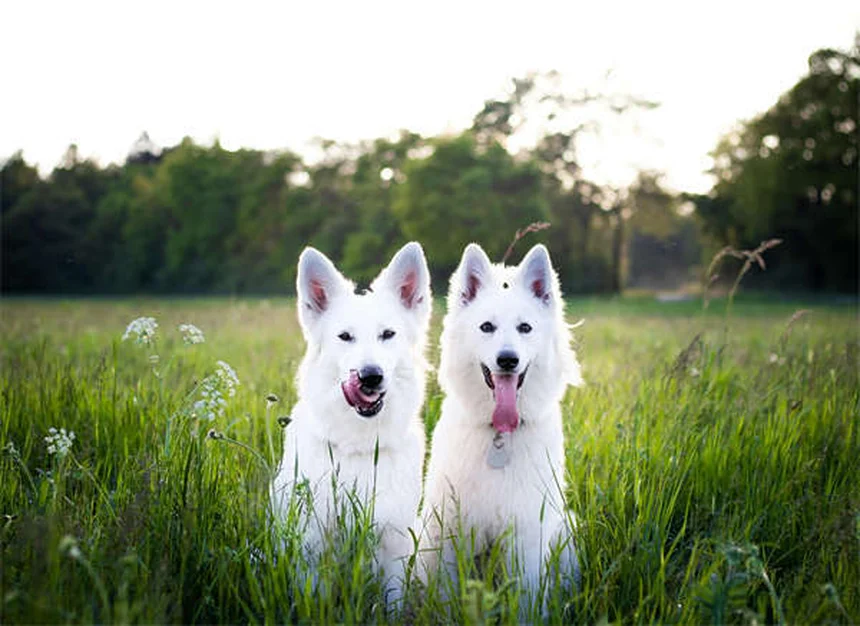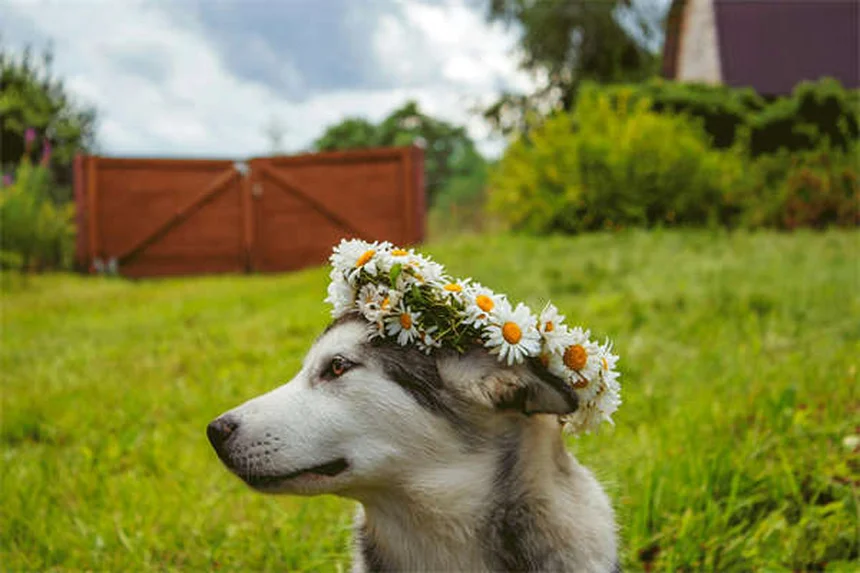What makes puppy food different from adult dog food? The answer is: Everything from protein levels to mineral ratios! Puppies aren't just small dogs - they're growing at lightning speed, which means their nutritional needs are completely different. I've seen too many well-meaning owners make the mistake of feeding adult food to puppies, not realizing they're risking serious health issues like bone fractures and heart disease. In this guide, we'll break down exactly what your furball needs to grow up strong and healthy. Trust me, after 10 years in pet nutrition, I can tell you that getting puppy food right is one of the best investments you'll ever make for your four-legged family member!
E.g. :5 Essential Tips to Keep Your Dog Safe During Thunderstorms
Advertisement
- 1、Why Puppy Nutrition Matters More Than You Think
- 2、The Puppy Food Breakdown
- 3、Special Considerations for Different Breeds
- 4、Decoding Dog Food Labels Like a Pro
- 5、Common Puppy Feeding Mistakes to Avoid
- 6、Transitioning to Adult Food
- 7、Final Thoughts on Puppy Nutrition
- 8、The Hidden Science Behind Puppy Food Formulas
- 9、Beyond the Bowl: Creative Feeding Strategies
- 10、The Great Raw Food Debate
- 11、The Treat Trap: Navigating Puppy Snacks
- 12、Water: The Forgotten Nutrient
- 13、Reading Your Puppy's Nutritional Signals
- 14、FAQs
Why Puppy Nutrition Matters More Than You Think
The Growing Pains of Puppyhood
Let me tell you something - puppies aren't just tiny versions of adult dogs. They're like little furry science experiments, growing at lightning speed! In their first year, they'll:
- Quadruple their birth weight (sometimes more!)
- Develop all their adult teeth
- Build enough muscle to jump on your couch (repeatedly)
Now here's a question you might not have considered: What happens if you feed that growing bundle of energy adult dog food? Well, it's like putting regular gas in a race car - it might run, but not well and definitely not for long.
The Real Cost of Cutting Corners
I've seen too many well-meaning pet owners try to save a few bucks by feeding puppies adult food. Big mistake. Puppies fed improper diets can develop:
| Health Issue | Risk Increase |
|---|---|
| Bone fractures | 300% higher |
| Heart disease | 200% higher |
| Growth abnormalities | 400% higher |
That's why we're going to break down exactly what makes puppy food special - and why your furball deserves the good stuff.
The Puppy Food Breakdown
 Photos provided by pixabay
Photos provided by pixabay
Protein: The Building Blocks of Puppy Power
Think of protein as the construction crew for your puppy's body. While adult dogs need maintenance, puppies are building an entire dog from scratch! Here's what you should know:
Puppy food contains about 22-32% protein, compared to adult food's 18-25%. But it's not just about quantity - the quality matters too. Look for foods with:
- Named animal proteins (chicken, beef, fish) as first ingredients
- Complete amino acid profiles
- Highly digestible sources
Fat Facts: More Than Just Calories
Fat gets a bad rap, but for puppies, it's liquid gold. Here's why:
Fat provides twice the energy of protein or carbs - perfect for puppies who seem to have nuclear reactors for energy sources. But more importantly, fats help absorb those crucial fat-soluble vitamins (A, D, E, and K).
Pro tip: Look for foods with 8-20% fat content and omega-3s from fish oil for brain development.
Special Considerations for Different Breeds
Toy Breeds vs. Giant Pups
Not all puppies grow at the same rate. A Chihuahua reaches adulthood by 9 months, while a Great Dane keeps growing for 18-24 months! This means:
- Toy breeds need more calorie-dense food (they have tiny stomachs!)
- Large breeds need controlled calcium to prevent rapid growth
- Medium breeds fall somewhere in between
Ever wonder why there's no "one size fits all" puppy food? Now you know!
 Photos provided by pixabay
Photos provided by pixabay
Protein: The Building Blocks of Puppy Power
Large breed puppies are particularly sensitive to nutrition. Feed them regular puppy food, and you might end up with:
- Joint problems from too-rapid growth
- Bone deformities from improper calcium ratios
- Future arthritis from poor skeletal development
That's why specialized large breed puppy foods exist - they're like the Goldilocks formula: not too much, not too little, just right.
Decoding Dog Food Labels Like a Pro
AAFCO: The Nutrition Watchdog
Here's something that might surprise you: pet food regulation is mostly voluntary. That's where AAFCO comes in. They set the standards for what "complete and balanced" really means.
When shopping for puppy food, look for these magic words on the bag: "Formulated to meet the nutritional levels established by the AAFCO Dog Food Nutrient Profiles for growth."
Life Stage Labeling Explained
Dog foods come with different life stage claims. Here's what they really mean:
- Growth: Just for puppies (and pregnant/nursing moms)
- Adult Maintenance: For dogs over 1 year
- All Life Stages: Meets both growth and adult standards
Fun fact: "All Life Stages" food is essentially puppy food that adult dogs can eat - not the other way around!
Common Puppy Feeding Mistakes to Avoid
 Photos provided by pixabay
Photos provided by pixabay
Protein: The Building Blocks of Puppy Power
I get it - puppies are cute when they eat. But free-feeding (leaving food out all day) can lead to:
- Obesity (especially in small breeds)
- Poor potty training (no schedule = accidents)
- Missed bonding opportunities
Instead, try scheduled meals 3-4 times daily. Your puppy (and your carpet) will thank you.
Supplement Overload
More isn't always better. Adding calcium supplements to balanced puppy food can actually cause bone problems. Unless your vet recommends it, stick to the food - good brands already include everything needed.
Transitioning to Adult Food
When to Make the Switch
Here's a handy guide for when to transition:
| Breed Size | Transition Age |
|---|---|
| Toy/Small | 9-12 months |
| Medium | 12-14 months |
| Large/Giant | 18-24 months |
Remember: these are guidelines. Your vet knows your pup best!
How to Transition Properly
Switching foods isn't like changing TV channels - you need to do it gradually over 7-10 days. Here's how:
- Days 1-3: 25% new food, 75% old
- Days 4-6: 50/50 mix
- Days 7-9: 75% new, 25% old
- Day 10: 100% new food
This slow transition helps avoid digestive upset - because nobody wants puppy diarrhea. Trust me.
Final Thoughts on Puppy Nutrition
Investing in Your Puppy's Future
Good nutrition is the foundation for:
- A shiny coat
- Strong bones and muscles
- Healthy organs
- Sharp mind
Think of puppy food as an investment - you're building the dog they'll become. And that's worth every penny.
When in Doubt, Ask the Experts
Your veterinarian is your best resource for puppy nutrition advice. They can:
- Recommend specific brands
- Assess your pup's growth
- Adjust for any special needs
After all, you wouldn't take car advice from a baker - get your puppy tips from the pros!
The Hidden Science Behind Puppy Food Formulas
What Really Goes Into That Kibble?
You'd be amazed at how much research goes into creating the perfect puppy food. Nutritionists spend years perfecting these formulas, balancing over 40 essential nutrients! Here's what most people don't realize:
Puppy food isn't just about adding more protein - it's about the precise ratios of calcium to phosphorus (1.2:1 is the magic number), the right blend of DHA for brain development, and carefully measured calorie content. Did you know some puppy foods actually contain probiotics to help develop healthy gut bacteria?
The Puppy Gut Microbiome Mystery
Here's something fascinating - puppies are born with sterile guts! Their microbiome develops through:
- Mother's milk (colostrum is packed with good bacteria)
- Environmental exposure (yes, eating dirt has benefits)
- Specially formulated puppy foods with prebiotics
This delicate gut development impacts everything from immune function to behavior. That's why abrupt food changes can cause such digestive chaos - you're disrupting an entire microscopic ecosystem!
Beyond the Bowl: Creative Feeding Strategies
Turning Mealtime Into Brain Time
Who says eating has to be boring? Try these fun feeding methods that stimulate your pup's mind:
Puzzle feeders are my personal favorite - they turn a 2-minute meal into a 20-minute mental workout. You can find everything from simple slow-feed bowls to advanced puzzle toys that require your pup to solve problems to get their food. Bonus benefit: it prevents that scary "inhale-the-entire-bowl-in-3-seconds" habit some puppies develop.
The Training-Feeding Connection
Here's a pro tip most new puppy owners miss - you can use up to 20% of your puppy's daily food allowance for training! This serves three purposes:
- Makes training more rewarding (food motivation works wonders)
- Prevents overfeeding from too many treats
- Strengthens your bond through positive reinforcement
Just remember to subtract these training "meals" from their regular portions. No double-dipping!
The Great Raw Food Debate
What Science Says About Raw Diets
Is raw food really better for puppies? The answer isn't as simple as social media makes it seem. While some swear by raw diets, veterinary nutritionists raise concerns about:
| Potential Benefit | Associated Risk |
|---|---|
| Shinier coat | Bacterial contamination |
| Smaller stools | Nutritional imbalances |
| Natural chewing | Bone fragment hazards |
The truth? Commercial puppy foods undergo rigorous testing to ensure complete nutrition, while homemade raw diets often lack proper scientific formulation.
If You Choose Raw: Safety First
If you're determined to go raw, at least follow these safety protocols:
- Work with a veterinary nutritionist to balance the diet
- Practice extreme food safety (separate cutting boards, disinfect surfaces)
- Never feed cooked bones (they splinter dangerously)
- Monitor growth closely for any nutritional deficiencies
Remember - puppies have developing immune systems and are more vulnerable to foodborne illnesses than adult dogs.
When Treats Become Trouble
We've all been there - those puppy eyes begging for just one more treat. But here's the cold hard truth: treats should never exceed 10% of daily calories. For a small breed puppy, that might mean just 2-3 small treats per day!
Common signs you're overdoing it with treats:
- Puppy starts refusing regular meals
- Unexpected weight gain
- Digestive upset (soft stools or gas)
Smart Treat Alternatives
Instead of calorie-packed commercial treats, try these healthier options:
Frozen green beans or carrot sticks make excellent low-calorie chew toys. For training sessions, use tiny pieces of their regular kibble. And here's a fun trick - reserve a portion of their daily food to use as "treats" during playtime. Same nutrition, different delivery method!
Water: The Forgotten Nutrient
Why Hydration Matters Even More for Puppies
Puppies have higher water requirements per pound than adult dogs - about 1/2 to 1 ounce per pound of body weight daily. Did you know dehydration can seriously impact a puppy's growth and development? Watch for these subtle signs:
- Dry nose and gums
- Loss of skin elasticity
- Decreased energy levels
Making Water More Appealing
Some puppies need encouragement to drink enough. Try these tricks:
Add ice cubes to the water bowl (many puppies love playing with them). Use a pet water fountain - the moving water often attracts more interest. Place multiple water stations around your home. And never underestimate the power of fresh, clean water - change it at least twice daily!
Reading Your Puppy's Nutritional Signals
The Body Condition Score Cheat Sheet
Forget the scale - here's how to visually assess if your puppy is getting proper nutrition:
| What to Check | Ideal Condition |
|---|---|
| Ribs | Easily felt under thin fat layer |
| Waist | Visible when viewed from above |
| Abdomen | Tucks up when viewed from side |
Remember - puppies should look lean, not pudgy. Those "adorable rolls" could signal future health problems.
When Growth Spurts Hit
Puppies don't grow at a steady rate - they have dramatic growth spurts followed by plateaus. During active growth phases, you might notice:
- Increased appetite (sometimes ravenous!)
- Clumsiness as limbs grow disproportionately
- Increased sleep needs
This is completely normal. Just resist the urge to overfeed - stick to the recommended amounts adjusted for your puppy's current weight.
E.g. :Can Puppies Eat Adult Dog Food? | PetMD
FAQs
Q: How much more protein do puppies need compared to adult dogs?
A: Puppies need significantly more protein than adult dogs - we're talking about 22-32% in their food compared to just 18-25% for adults. Here's why this matters: protein is the building block for everything from muscles to organs, and your puppy is literally constructing an entire dog from scratch! When I evaluate puppy foods, I always look for named animal proteins (like chicken, beef or fish) as the first ingredients. But it's not just about quantity - the quality and digestibility matter too. A food might meet the minimum protein percentage, but if it's from low-quality sources, your pup won't get the full benefit. That's why I recommend sticking with reputable brands that use complete amino acid profiles.
Q: Why is fat content so important in puppy food?
A: Fat is like rocket fuel for your puppy's nonstop energy! It provides twice the calories of protein or carbs, which is perfect for that little ball of energy tearing around your house. But here's what most people don't realize: fat also helps absorb those crucial fat-soluble vitamins (A, D, E and K). In my experience, the ideal puppy food contains 8-20% fat, with omega-3 fatty acids from fish oil for brain development. I've seen puppies on low-fat diets struggle with poor coat quality and slower learning - clear signs they're missing out on these essential nutrients. Just remember, while fat is important, too much can lead to obesity, so balance is key!
Q: What special considerations are there for large breed puppies?
A: Large breed puppies are like the high-performance athletes of the dog world - they need specialized nutrition to grow properly. The biggest issue? Their bones. Feed them regular puppy food, and you might end up with joint problems or bone deformities from too-rapid growth. That's why I always recommend large breed-specific puppy foods that control calcium and phosphorus levels. These formulas typically have slightly lower fat and carefully balanced minerals to support steady, healthy growth. From my work with Great Dane puppies, I can tell you that getting this right in the first year can prevent painful (and expensive) orthopedic issues later in life.
Q: How do I know if a puppy food meets nutritional standards?
A: Look for the AAFCO statement on the bag - it's your guarantee the food meets minimum nutritional requirements. The magic words you want to see are: "Formulated to meet the nutritional levels established by the AAFCO Dog Food Nutrient Profiles for growth." Here's a pro tip I've learned: foods that have undergone actual feeding trials (rather than just lab tests) are generally more reliable. I always check the fine print - some foods say "for all life stages," which technically meets puppy standards but might be too rich for some adults. When in doubt, your vet can help interpret these labels for your specific pup.
Q: When should I switch from puppy to adult food?
A: The transition timing depends entirely on your dog's breed size - this isn't a one-size-fits-all situation! In my practice, I recommend these general guidelines: toy/small breeds at 9-12 months, medium breeds at 12-14 months, and large/giant breeds at 18-24 months. But here's the important part: don't make the switch overnight. I always advise a 7-10 day transition period, gradually mixing in more of the new food. This gives your pup's digestive system time to adjust - because trust me, you don't want to deal with the aftermath of an abrupt food change! Your vet can help determine the perfect timing based on your individual dog's growth and condition.

